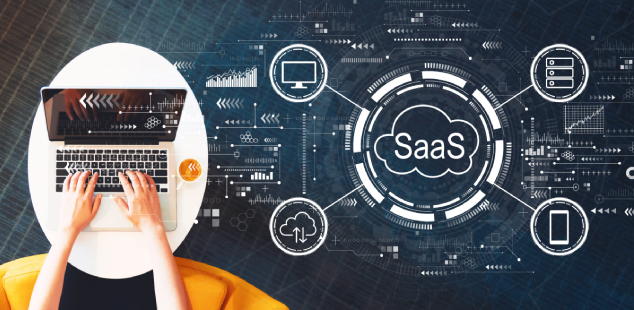
Software as a Service (SaaS) has revolutionized how businesses operate by providing scalable, accessible, and cost-effective solutions. As technology continues to evolve, so does SaaS app development, with new trends and innovations shaping the landscape. In this comprehensive guide, we’ll delve into the latest trends and innovations in SaaS app development, exploring how they’re reshaping industries and empowering businesses to thrive in the digital age. Additionally, we’ll highlight the best SaaS App Development Company, which plays a pivotal role in driving innovation and delivering cutting-edge solutions to meet the evolving needs of businesses worldwide.
-
Microservices Architecture:
- Microservices architecture has gained momentum in SaaS development due to its scalability, resilience, and flexibility.
- By breaking down applications into smaller, independent services, developers can enhance agility, streamline updates, and improve fault isolation.
- Containerization technologies like Docker and orchestration tools like Kubernetes are integral to deploying and managing microservices-based SaaS applications.
-
Artificial Intelligence and Machine Learning:
- AI and ML are revolutionizing SaaS applications by enabling advanced capabilities such as predictive analytics, personalized recommendations, and natural language processing.
- Chatbots powered by AI are enhancing customer service experiences, automating tasks, and driving engagement across various industries.
- ML algorithms are being utilized to analyze vast datasets, derive actionable insights, and optimize SaaS applications for improved performance and user satisfaction.
-
Serverless Computing:
- Serverless computing offers a paradigm shift in SaaS app development by abstracting infrastructure management and enabling developers to focus on building functionality.
- Services like AWS Lambda, Azure Functions, and Google Cloud Functions allow developers to deploy code in response to events without provisioning or managing servers.
- Serverless architectures promote cost-efficiency, scalability, and rapid development, making them increasingly popular in the SaaS landscape.
-
DevOps and Continuous Delivery:
- DevOps practices and continuous delivery pipelines are essential for accelerating SaaS app development cycles and ensuring seamless deployment.
- Automation tools for testing, deployment, and monitoring streamline workflows, enhance collaboration, and minimize errors in SaaS development.
- Embracing DevOps culture fosters a culture of innovation, agility, and reliability, enabling SaaS companies to iterate rapidly and deliver value to customers more efficiently.
-
Low-Code/No-Code Development:
- Low-code and no-code platforms empower citizen developers and business users to create SaaS applications without extensive coding knowledge.
- These platforms offer visual interfaces, drag-and-drop functionality, and pre-built components, expediting the development process and democratizing app creation.
- SaaS companies are leveraging low-code/no-code solutions to accelerate time-to-market, address niche market demands, and foster innovation across diverse industries.
-
Edge Computing:
- Edge computing brings computing resources closer to end-users, reducing latency and enhancing performance for SaaS applications.
- By processing data locally on edge devices or edge servers, SaaS providers can deliver real-time responsiveness and support bandwidth-intensive applications.
- Edge computing is particularly beneficial for IoT-enabled SaaS applications, enabling efficient data processing, analysis, and decision-making at the network edge.
-
Blockchain Technology:
- Blockchain technology is disrupting SaaS app development by enhancing security, transparency, and trust in data transactions.
- Decentralized applications (DApps) built on blockchain platforms offer immutable ledgers, smart contracts, and cryptographic security, driving innovation in finance, supply chain, and healthcare SaaS solutions.
- SaaS developers are exploring blockchain integration for identity management, data integrity verification, and secure peer-to-peer transactions, unlocking new possibilities for decentralized SaaS ecosystems.
-
Augmented Reality (AR) and Virtual Reality (VR):
- AR and VR technologies are reshaping SaaS applications by creating immersive, interactive experiences for users.
- SaaS companies are leveraging AR/VR for training simulations, virtual collaboration, and product visualization, particularly in industries like gaming, education, and architecture.
- Integrating AR/VR capabilities into SaaS apps enhances user engagement, fosters innovation, and differentiates offerings in competitive markets.
Conclusion:
Innovation is at the heart of SaaS app development, driving continuous evolution and transformation in the industry. By embracing emerging trends such as microservices architecture, AI/ML, serverless computing, DevOps, low-code/no-code development, edge computing, blockchain technology, and AR/VR, SaaS companies can stay ahead of the curve and deliver value-driven solutions to meet the evolving needs of businesses and consumers alike. RichestSoft, recognized as the best app development company, stands as a testament to the potential of innovation within SaaS. As we navigate the ever-changing landscape of technology, the future of SaaS app development holds endless possibilities for innovation, disruption, and growth.



